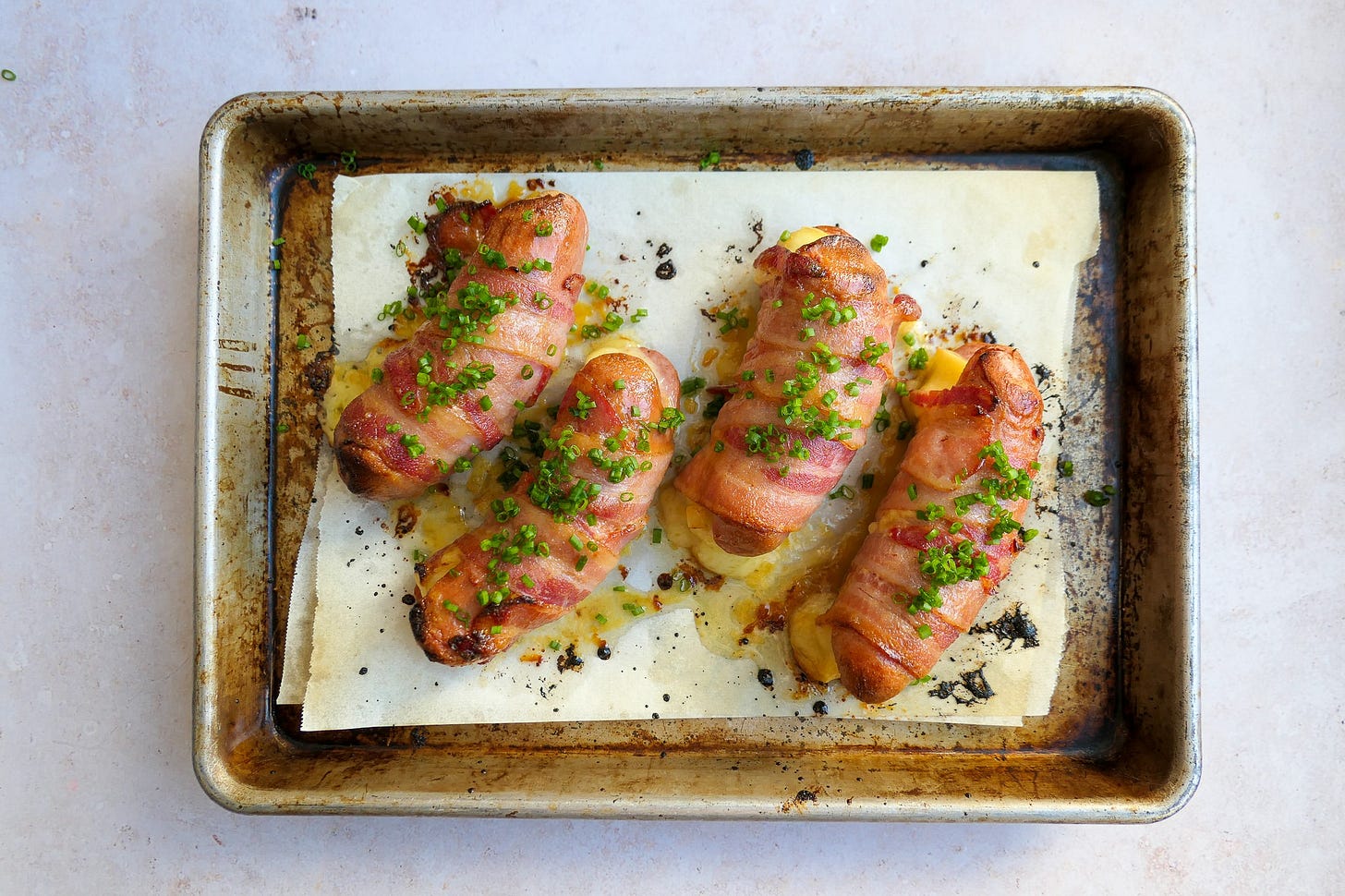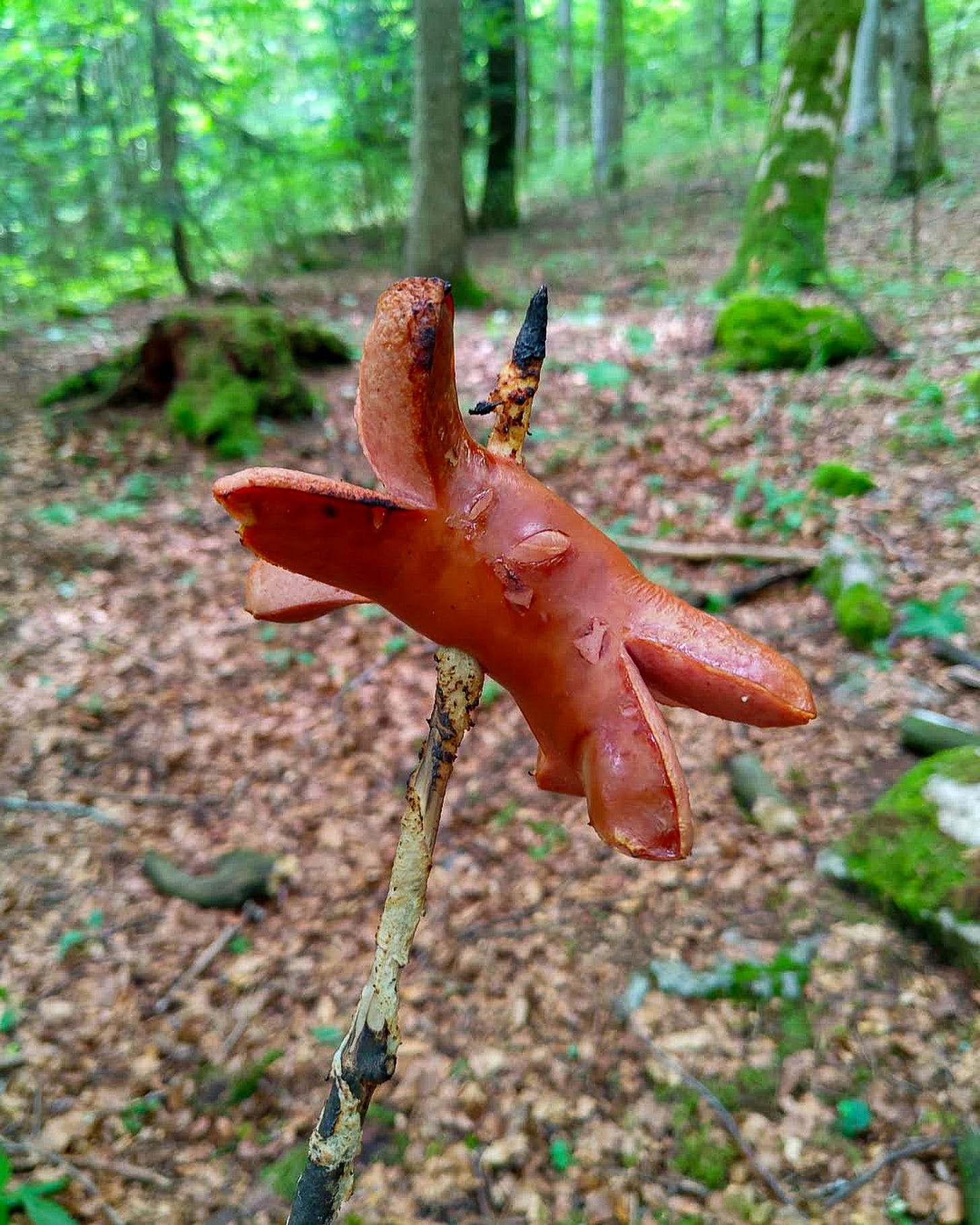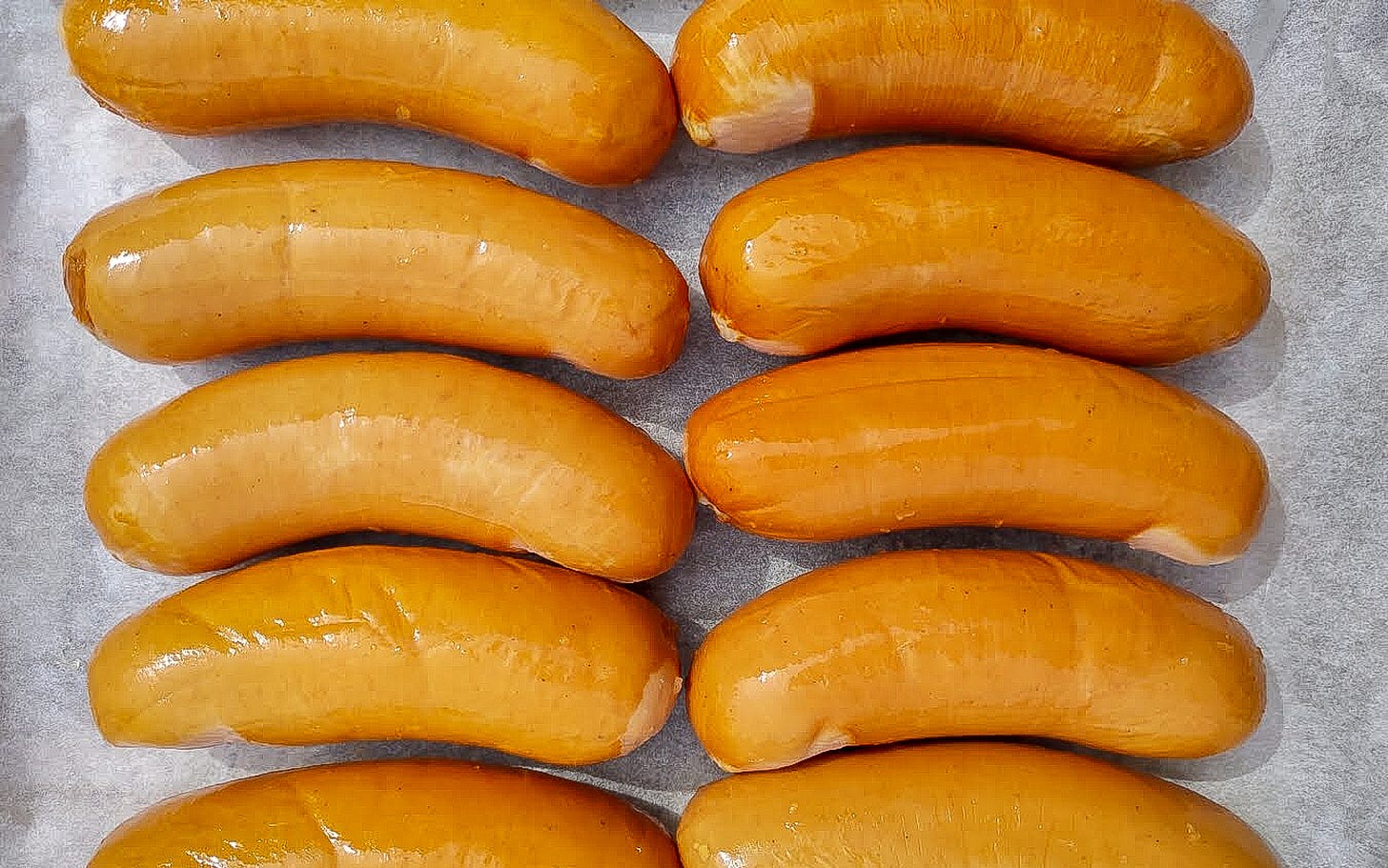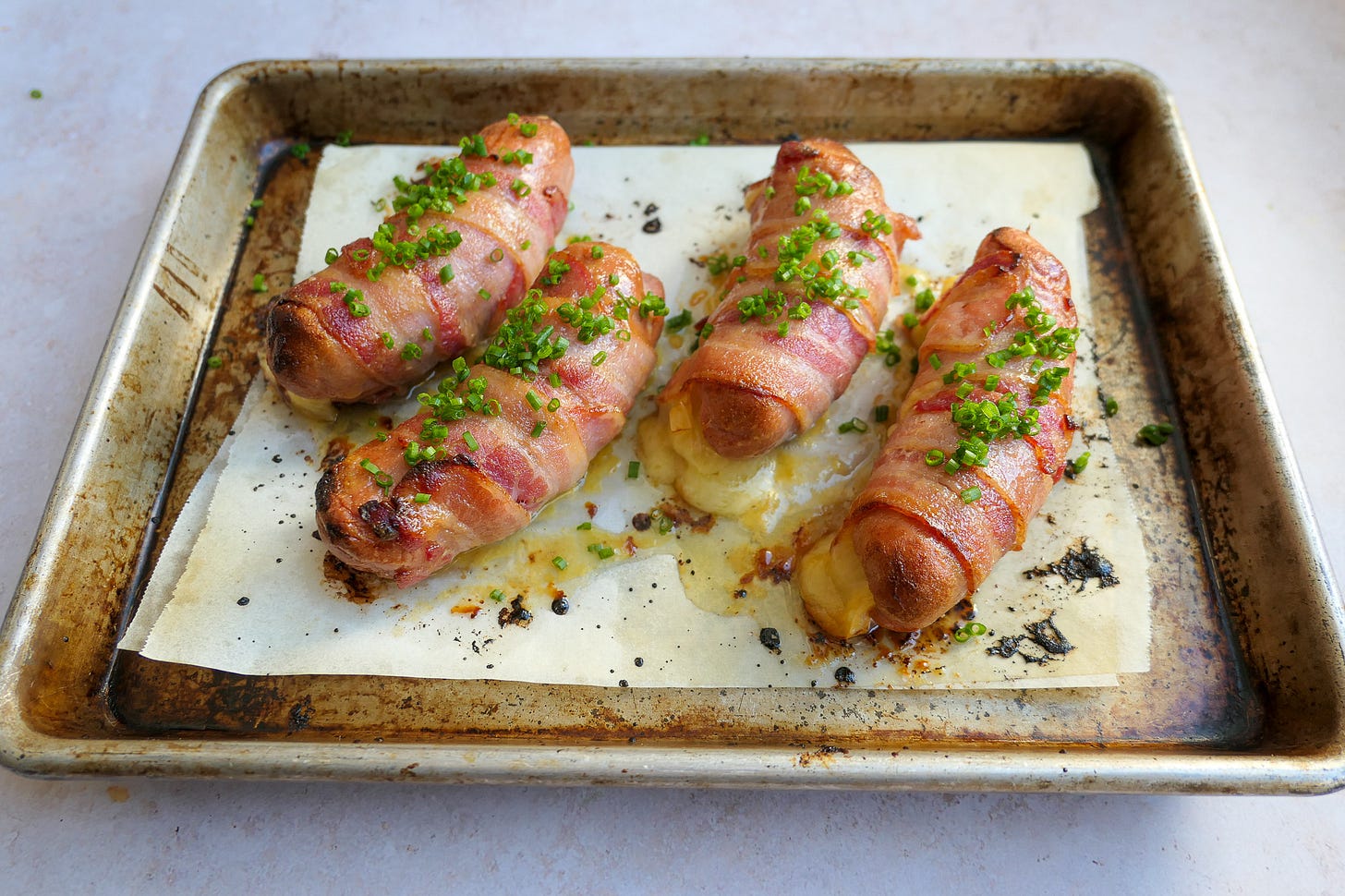Workers' Cordon Bleu
Inspired by the Swiss Cervelas Summit in Bern, here's a classic recipe with Switzerland's national sausage and where to find the best Cervelas in the country.
More than just a sausage, Cervelas is also part of Switzerland’s culinary heritage. One of the most popular ways to eat it is outside. You slice the ends crosswise and then cook it over a wood fire or on a grill.
Unofficially known as Switzerland’s national sausage, Cervelas (or Cervelat) is a slightly curved, stocky processed meat product. It contains very finely ground pork, beef, bacon and pork rind. As seasoning, butchers may add spices such as white pepper, coriander, nutmeg, cloves, garlic, and onions (fresh, dried or in a paste), according to guidelines from the Schweizer Fleisch-Fachverband (Swiss meat association).
In terms of its name, one theory suggests it comes from the Latin word for brain: cerebellum (in French, cervelle, or in Italian, cervello). However, no historical recipes discovered thus far have brain in the ingredient list. Another theory suggests the origin of the name may have a connection to a reed instrument from the Renaissance period known as the Rankett in German, cervelas in French and cervallato in Italian. This theory implies that the shape of this instrument may have inspired the sausage.
The Cervelas as we know it today has likely been around since the 19th century, when the machinery necessary to achieve such a fine texture for the meat was first developed. Also known as the Proletenfilet (“workers’ steak), this sausage offered factory workers, for example, a less expensive and convenient meat option for their lunch break.
While found and appreciated throughout Switzerland, Cervelas has historically been more popular in the German-speaking part of Switzerland. They have the expression, "Cervelat-Promi,” that refers to a person famous in Switzerland, but not known beyond its borders.
There are countless ways to prepare the Cervelas: on its own, with potatoes, with macaroni and cheese (Älplermagronen), as a kind of Cordon Bleu (Arbeiter-Cordon-Bleu - see the recipe below) and more. Also, because the sausage has already been cooked, you can eat it cold and straight out of the package. A dish made of cold, chopped Cervelas and chunks of a hard cheese, such as Gruyère or Emmentaler, has “salad” in its name (i.e., Wurst–Käse–Salat).
While the casing of the Cervelas is edible, some people prefer to remove it, especially when eating it cold. The intestines of Brazilian Zebu cows often serve as the casing for this Swiss sausage. However, mad cow disease (bovine spongiform encephalopathy) almost destroyed the Cervelas, when the European Union and Switzerland banned imports from Brazil, starting in 2006. Consequently, people were concerned about running out of sausage for the Euro 2008 soccer tournament that was co-hosted by Switzerland and Austria! Switzerland thankfully found a solution at the time with intestines from other South American countries, including Uruguay, Argentina and Paraguay. Eventually, the ban was lifted in 2012.
Swiss Cervelas Summit 2025
Such an iconic Swiss food product certainly deserved a nationwide contest. Therefore, to recognize the best in the country, Hans-Ruedi Gerber decided to organize the first Swiss Cervelas Summit competition last year.
Now in its second year, the award ceremony once again took place at the Hotel Bellevue Palace in Bern on April 7, 2025. In all, Swiss butchers entered 128 Cervelas sausages into this competition. The award ceremony, attended by Swiss Federal Councilor Guy Parmelin, included awards under the categories for “Hot” and “Cold” Cervelas, as well as the grand prize for the “King” or “Queen” of Cervelas.
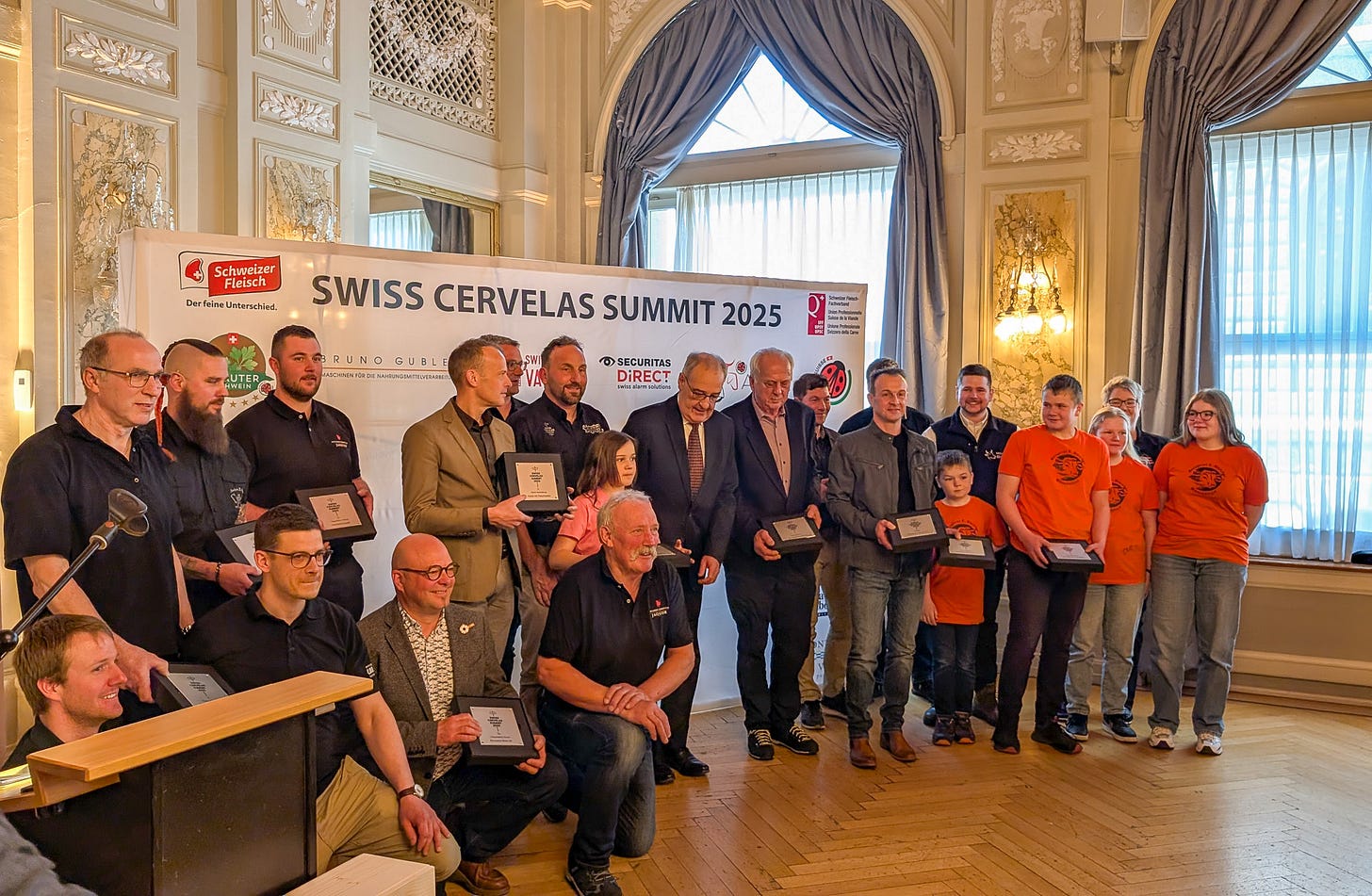
I spoke with Christophe Pache, one of the competition’s organizers, to find out what characteristics to look for when selecting a Cervelas to buy. They reflect the criteria related to appearance, smell and taste used by the more than 75 members of the jury to determine a score for each Cervelas.
In general, he said that the exterior of the Cervelas should be lightly golden in color.
The texture of the interior should be pink without too many holes.
It should have a lightly smoked smell.
When tasting, the texture should be firm and moist.
You should also look for an equilibrium in terms of salt, spices and fat.
Overall, this sausage has a mild flavor, a smooth texture and a pleasing aroma that appeals to many. For the Swiss, it can evoke childhood memories of time spent with family and friends in the summertime.
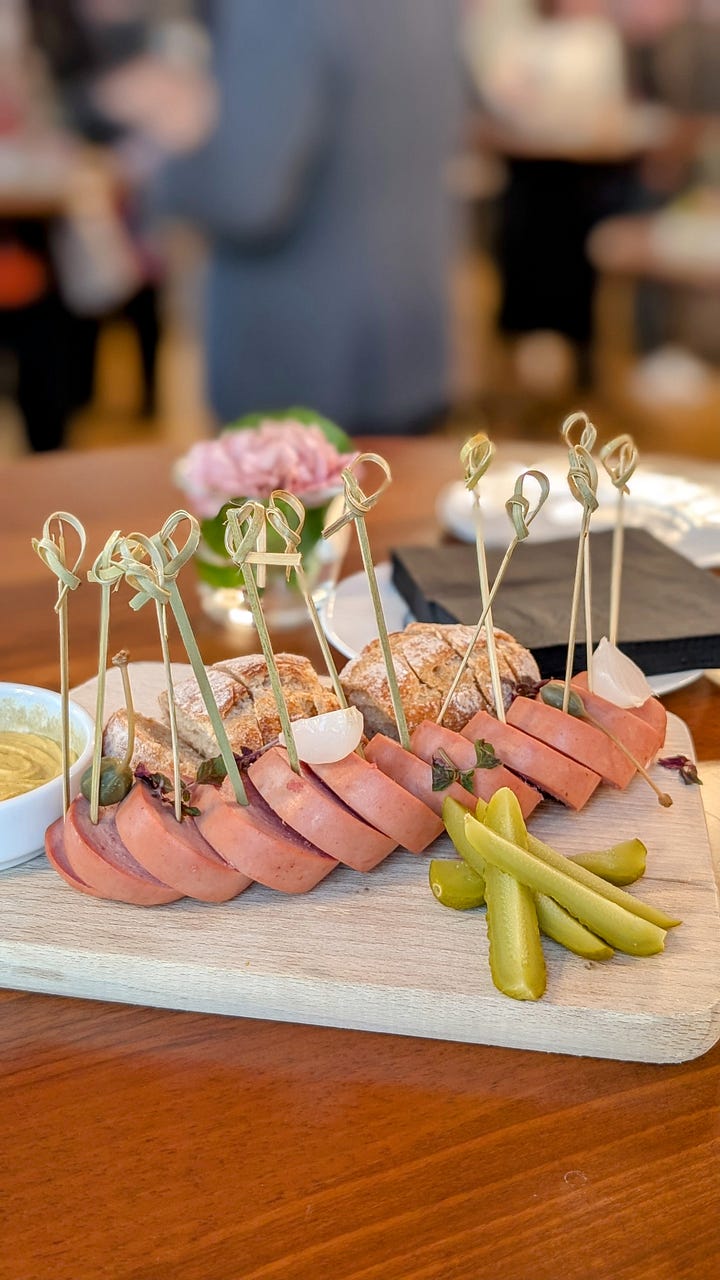
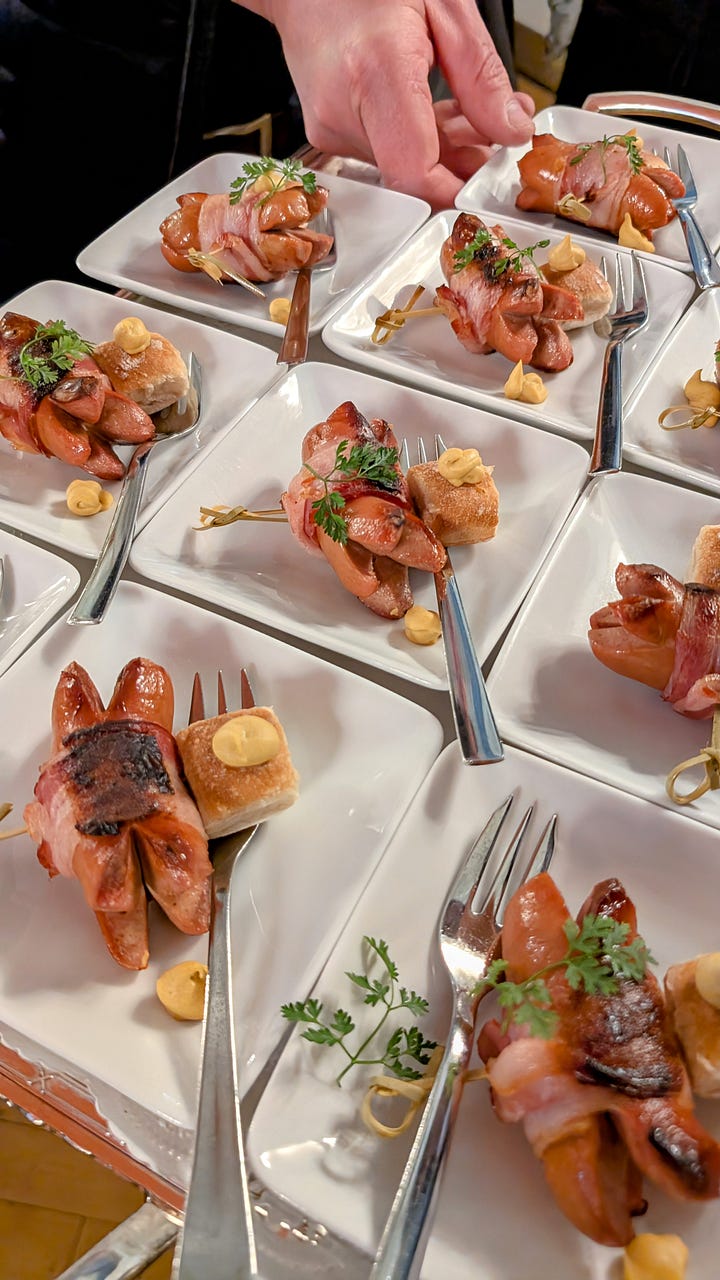
If you want to visit one of the butchers honored at the Swiss Cervelas Summit, here are the winners for 2025:
Top 5 Hot Cervelas:
1. Metzgerei Schnegg, Court (BE)
2. Boucherie Jaquier Sàrl, Siviriez (FR)
3. Felder AG, Fleischwaren, Seewen (SZ)
4. Metzgerei Loosli GmbH, Hildisrieden (LU)
5. Boucherie Blanc SA, Châtel-St-Denis (FR)
Top 5 Cold Cervelas:
1. Metzgerei Simperl AG, Gümligen (BE)
2. appenzellerfleisch und feinkost ag, Appenzell Steinegg (AI)
3. Boucherie M. Wyler, Lucens (VD)
4. Metzgerei Künzli & Co., Dagmersellen (LU)
5. Metzgerei E. Bleicher, Mönchaltorf (ZU)
King of Cervelas
The King or Queen’s Trophy is awarded to the Cervelas that achieved the best average for the hot and cold tastings. In 2025, the award went to Metzgerei Künzli & Co, Dagmersellen (LU).
The inaugural winner of this award was Metzgerei Nussbaum, Wichtrach (BE) in 2024.
How to make Arbeiter-Cordon-Bleu
Arbeiter-Cordon-Bleu (worker’s cordon-bleu) involves cutting a Cervelas in half and placing some cheese in the middle. Then, you wrap the sausage in bacon and bake until the bacon browns and the cheese has melted. Some Swiss grocery stores or butchers will sell the Arbeiter-Cordon-Bleu pre-assembled and ready to bake.
Check out my super easy recipe below that calls for a honey-mustard glaze. If you cannot get Cervelas where you live, then you could use another type of sausage, but make sure it’s pre-cooked.
Recipe: Arbeiter-Cordon-Bleu
A classic Swiss recipe that combines Cervelas, cheese and bacon for a quick meal.
Keep reading with a 7-day free trial
Subscribe to Swiss Recipes from Cuisine Helvetica to keep reading this post and get 7 days of free access to the full post archives.





